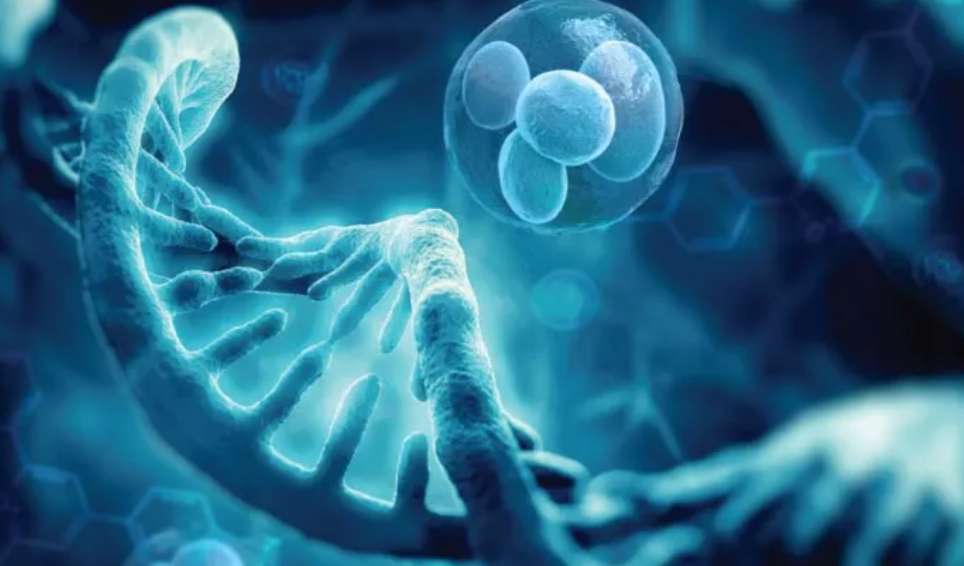In total, the study included 196,470 newborns where 48% of the mothers had been vaccinated with one or more doses of an mRNA vaccine against COVID-19. Almost 80% had received the Pfizer/BioNTech vaccine and just over 20% the vaccine from Moderna.
In addition to lower infant mortality, the researchers also found a significantly lower risk of two other serious complications in infants born to mothers who had been vaccinated. In total, fifteen neonatal complications and conditions were studied.
“We saw lower rates of cerebral hemorrhages and hypoxia-ischemic conditions of the brain in the newborns of vaccinated than in babies of unvaccinated in pregnancy, while the incidence of other bleedings, blood clots or inflammation in various organ systems did not differ between the groups,” says Mikael Norman.
Babies born with higher levels of cadmium in their umbilical cord blood may be more likely to develop childhood asthma and allergies, according to research presented at the European Respiratory Society International Congress.
Cadmium is known to be hazardous to human health and its use is restricted in the European Union, but it has been widely used, for example in batteries, pigments and as a coating for other metals. It is also present in tobacco and can enter the body via smoking or passive smoking.
Researchers say their findings lend support for tight controls over the use and disposal of cadmium.
The research was presented to the virtual conference by Professor Isabella Annesi-Maesano, research director at France’s Institut national de la santé et de la recherche médicale (INSERM) and head of the epidemiology of allergic and respiratory diseases department of the Institute Pierre Louis of Epidemiology and Public Health, INSERM and Sorbonne Université, Paris, France.
She said: “Cadmium is a type of heavy metal. We know that people can be exposed to heavy metals through food, water and air, and even very small amounts can have damaging effects on our health.
“We wanted to investigate the levels of certain heavy metals that babies are being exposed to in the womb and to understand any impact this could have on their development and future health.”
The study included 706 women and their babies who were being cared for in maternity units in Nancy and Poitier in France. Researchers measured the quantities of three different heavy metals—cadmium, manganese and lead—in the women’s blood while they were pregnant and in blood taken from their babies’ umbilical cords after delivery.
Prof. Nordeng is using this database as part of a project called DrugsInPregnancy to examine the effect of drugs on an infant’s neurological development, focusing on drugs like antidepressants, migraine agents and painkillers. She is combining medical data with surveys that tap into the parents’ observations, such as when their child starts walking, or whether a 3-year-old can catch a ball.
Crucially, the Norwegian Institute of Public Health also stored biological material such as umbilical cord blood from those taking part, providing information that could shed new light on the underlying mechanisms of how drugs affect genes, or what is known as pharmacoepigenetics.
‘It may actually alter the way that we understand underlying biological pathways of drug neurotoxicity, and consequently what we teach in pharmacology,’ said Prof. Nordeng.
She has found that most standard treatments are safe for pregnant women, with some exceptions. More than half of pregnant women are known to take paracetamol, and the majority risk nothing in doing so. Prolonged use of paracetamol, however, was associated with increased risk of ADHD and behavioural problems for the child, according to Prof. Nordeng’s findings.
Internalising behaviour
Another area of concern is a widely-used type of antidepressants known as selective serotonin reuptake inhibitors, or SSRIs. Their use in pregnancy correlates with higher risks of what is called internalising behaviour in young children—symptoms of depression or shyness in interacting with others.
But Prof. Nordeng points out that studies using observational data can only show associations and not causation. A mother with depression, for example, might be more likely to have a child with similar symptoms than a woman without depression, due to genetic or familial predispositions, but it does not mean the drugs she took during pregnancy are necessarily the cause.
To allow for this, Prof. Nordeng adjusts for confounding factors as much as possible when comparing the children of depressed mothers who took medication with those of mothers with depression who did not. Even so, this cannot account for other unmeasured factors, such as non-pharmacological treatment.
‘We really try in every way to say that these are signals, these are observational studies,’ said Prof. Nordeng. ‘We’re very conscious about not scaring women and the public. In many cases, the risk of the untreated maternal disorder is much greater to the unborn child than the drug exposure. You must always weigh the risk of the underlying illness.’
In many cases, however, the risk posed by an illness during pregnancy verses that of a treatment is still not clearly understood. It is something researchers at the University of Ulster, in Northern Ireland, have been trying to untangle.
They host a database called EUROmediCAT, which contains details on pregnant women from 22 registries across 15 European countries and aims to provide evidence on the safety of medications for chronic disease taken by the mother in the first trimester of pregnancy.
Dr. Maria Loane, a reader at the University of Ulster’s school of nursing and manager of EUROmediCAT’s Central Database, said their research has shown that some commonly used anti-epileptic drugs are associated with specific abnormalities when taken during pregnancy.
